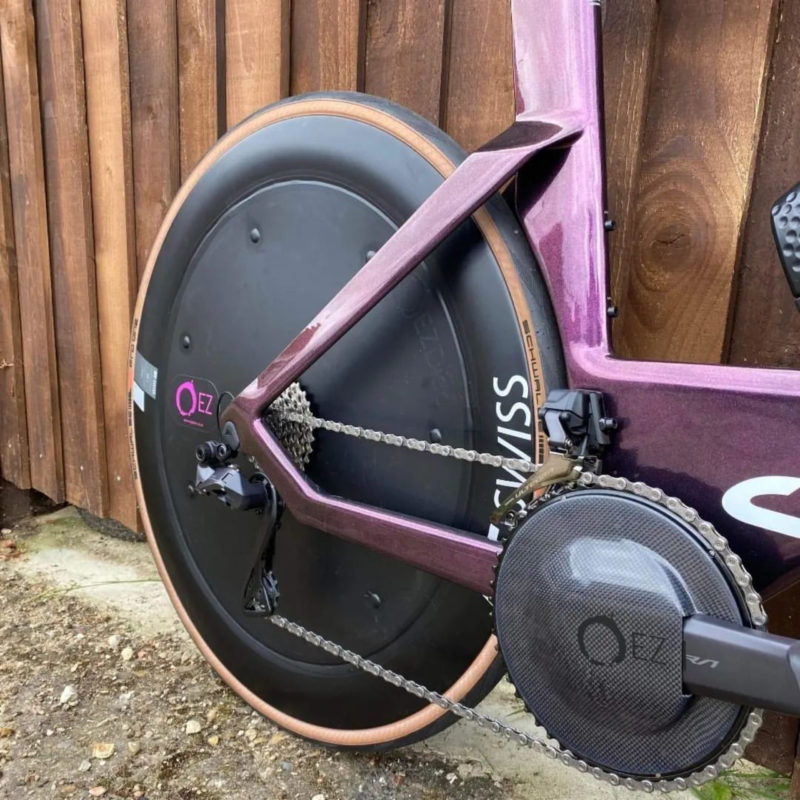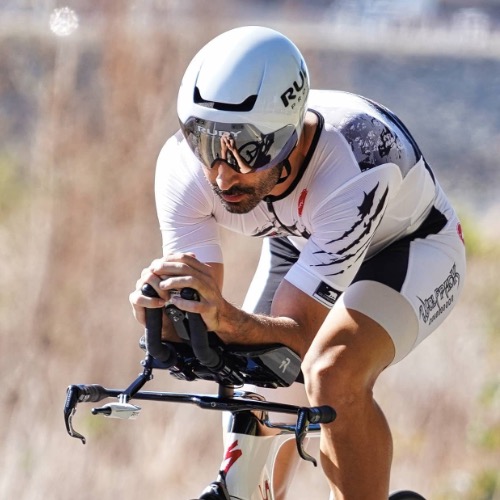Aerodynamic Upgrades on a Budget
Speed on the bike doesn’t need to break the bank, these products that provide that aerodynamic edge and wont put you in the red.

Triathletes are always looking for ways to push a little bit harder or get a little bit faster. When it comes to cycling in triathlon, the need for speed becomes multifaceted. Physical fitness and strength will always yield better results, but we’ve entered a new era where aerodynamics play just as much of a role in speed as bike fit or even, dare we say, fitness does.
Aero gains are by no means a new concept, companies have been producing high quality, effective products for decades to make every watt count. But this speed doesn’t come cheap. Deep dish aero wheels, fully custom carbon front ends and aero bike frames will set you back thousands of dollars. With triathlon costs so high already, this fully aero optimized set-up tends to tip the scales in the wrong direction.
So while the wheels, front ends and frames may be too costly for the average triathlete, the principles of aerodynamics can be achieved at home and during training with the help of a few basic (and less expensive) products.
What are aerodynamics?
To understand the value of these products, it’s important to have a basic understanding of aerodynamics.
The first concept we need to understand is drag or air resistance. It is a kind of friction that occurs between air particles and another object (e.g., a rider and his/her bike). Therefore, the greater the surface area, the greater the number of air particles hitting the object, thus creating more overall resistance. In an effort to conserve power and move faster, cyclists must find a way to reduce this drag.
The second concept centers around dimpling. A smooth, sleek object moves quickly and efficiently through the air, but dimpling (think dimples on a golf ball) believe it or not, further reduces drag by creating a.) a thin boundary of air that allows everything else to flow smoothly around it b.) a low-pressure area behind the object.
This concept of drag can occur at various points (i.e., our head, front wheel, shins, feet, etc.) so to truly maximize our gains, we need to address each element of the rider. Small marginal gains add up to a larger advantage in the long run.
Aerodynamics for all

-
EZ Gainz Rear Wheel Disc Cover and Chain Ring Cover
Rear Wheel Disc Cover:
One of the first areas riders look to upgrade for aero improvements are their wheels. In time-trial and triathlon racing, many people equip their bikes with a completely covered rear wheel or a full rear disc wheel. This blocks all air from getting caught in the rear wheel and keeps it moving past quickly. On windy days, the disc may also create a sail effect, pushing the rider even faster. But bolting one of these on is not cheap. Just that rear wheel alone can cost anywhere from $1,000 to $5,000 USD.
To make this rear wheel advantage more accessible to the masses, the team at EZ Gains has created an elegant solution to this problem. They’ve developed a simple cover made of durable and lightweight material that slips over your existing wheel, connecting securely and creating the SAME aero gains as if you purchased a fancy rear wheel. In fact, some testing suggests that depending on the wheel you install it on, the cover may perform better than a full disc wheel due to the fact that it’s much lighter in weight.
Testing this out ourselves, we found that installation was quite simple and could be done at home with the appropriate tools (most will need a lock ring tool). Once on the bike, the feel and performance was evident. It really showed its stuff on those fast descents, capturing an extra mile or two per hour in comparison to our 80mm deep section rear wheel.
The price point is one tenth the cost of purchasing a full disc wheel, starting under $200 USD yet provides nearly identical time savings (3+ minutes over 180k distance).
Chain Ring Cover:
EZ Gainz has also addressed another area of the bike that can slow you down, the chain ring. Just like with your wheels, air can get caught in the open space in your chain ring resulting in drag so they created a simple, cost efficient carbon fiber cover that slips over most setups.
Simply pop off your pedal, peel off the double sided tape, pop it on and you are good to go.

-
Velotoze Aero Socks and Shoe Covers
Aero apparel is growing in popularity among the amateur racing community. More and more, we are seeing athletes arming themselves with full boot covers and knee high aero socks or calf sleeves to pick up a few seconds here and there. As we said above, aero gains are all about finding small marginal improvements all over the body/bike, and a rider’s legs create a substantial amount of drag.
Velotoze makes products specifically designed to give riders a lower leg advantage.
Aero sleeves/socks:
Most competitive cyclists shave their legs, so why would you then need to go and cover them up with socks and sleeves? The answer is dimpling. As we touched on before, a dimpled surface can be more aerodynamic than a smooth one. Velotoze’s socks and sleeves are designed with distinct vertical ridges that create this same effect, allowing you to flow more smoothly and reduce drag.
Shoe and Toe Covers:
It doesn’t just stop at the ankles. Your straps and boa ratchets aren’t doing you any favors when it comes to reducing drag. Velotoze has simple covers that slip over your shoe to smooth out the surface. They range from simple toe covers for people that need to slip in and out easily to full shoe and lower leg covers like those used in the pro cycling tours.
During our test run with these, we felt noticeably more slippery through the air. Not to mention that the aero sleeves double as compression garments, giving us the muscular advantage as well. The toe covers were not only easy to slip on and off, but they kept our toes warm in cooler weather.

-
Rudy Project Nytron and Wing Helmet
Your head plays a crucial role in the aerodynamic equation. It is a large surface to break through the air and it dictates how air will flow around your shoulders and down your back.
The average vented bicycle helmet is great for keeping you safe and cool on warmer days, but all those vents create a ton of swirling air that will slow you down.
Aerodynamic helmets solve this problem by offering smoother surfaces with fewer, strategically placed vents. They streamline the air flowing over the top of your head and down your back and directs air around your shoulders.
It is important to note that these helmets are pricier than your average cycling helmet, but in comparison to the cost of other aerodynamic products, we felt it was well worth the investment.
Rudy Project – The Wing:
It’s a third generation aero helmet with tons of R&D behind it. The teardrop style design and full visor create the perfect airflow. The short tail reduces surface area as the rider moves his or her head and shifts around on our bike.
Rudy Project – Nytron:
Rudy’s aero road helmet, the Nytron, takes a similar aero design from the Wing, while incorporating smartly placed vents that direct airflow as needed.
We were only able to test out the Wing but we must say, it was a game changer. Compared to a normal road helmet, you can very clearly hear and feel the difference.
There is scientific testing which can be found on each of the aforementioned products websites to back up their performance. However we wanted to give them all a try to see what gains we could make. Our trials of these products were very basic—consisting of riding a long steep descent multiple times with and without these products—we saw a seven percent increase in average speed while maintaining the same watt output and similar conditions when equipped with these products.

